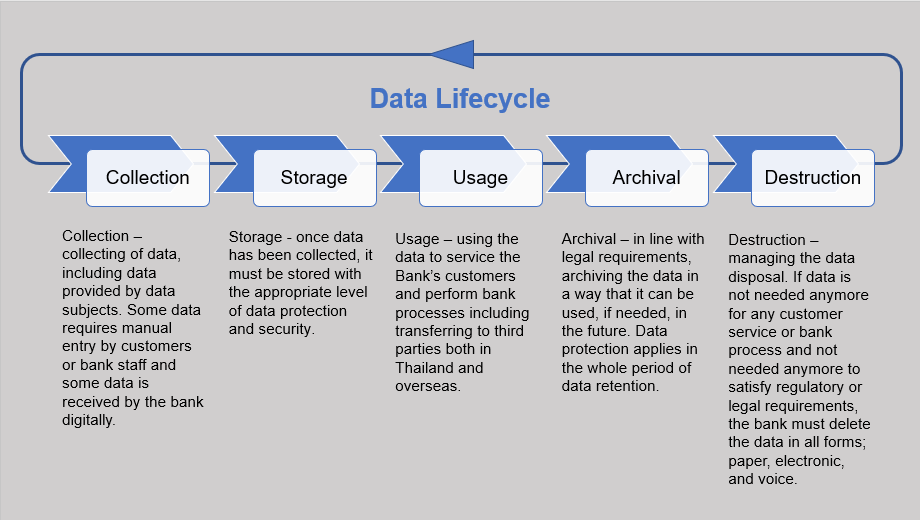Why Data Destruction is an Essential Element of Comprehensive Cyber Security
Why Data Destruction is an Essential Element of Comprehensive Cyber Security
Blog Article
Exactly How Appropriate Data Destruction Adds To Robust Computer System Security Solutions and Mitigates Threats of Information Breaches
In today's digital landscape, the relevance of appropriate information destruction can not be overemphasized, as it offers as an essential component of detailed computer protection services. The ramifications of inadequate information damage extend past mere conformity; they can exceptionally influence a company's cybersecurity pose and credibility.
Relevance of Information Devastation
In today's digital landscape, the importance of information devastation can not be overemphasized. As organizations significantly rely upon digital properties, the possible threats connected with data violations and unapproved accessibility intensify. Efficient information devastation is an essential element of a detailed details safety and security strategy, securing delicate details from coming under the hands of harmful actors.
When data is no more needed, just erasing data or formatting hard disk drives wants. Recurring data can usually be recovered making use of easily available tools, posing substantial dangers to both people and companies. This underscores the necessity for durable data damage methods that guarantee all information is irretrievably erased.
Furthermore, governing conformity mandates, such as GDPR and HIPAA, stress the commitment to shield sensitive information, including its appropriate disposal. Non-compliance can lead to serious lawful repercussions and monetary penalties. data destruction. Hence, incorporating reliable data destruction protocols not only enhances safety and security but additionally strengthens a company's credibility and dependability

Techniques of Secure Information Erasure
Numerous efficient techniques of safe and secure data erasure can be utilized to make sure that sensitive info is completely removed from storage tools. One widely recognized technique is information overwriting, which entails changing existing data with arbitrary patterns multiple times. This method substantially reduces the possibilities of data recuperation, although it may not work versus advanced forensic methods.

Physical damage is also a trusted strategy, where storage devices are provided pointless through shredding, crushing, or incineration. This approach guarantees that data can not be recouped by any methods yet requires careful handling of hazardous products.
Lastly, specialized software application devices created for safe data erasure provide functionalities that follow numerous erasure requirements. These tools usually include attributes like confirmation procedures to confirm successful information devastation.
Employing these techniques in mix can improve information safety and minimize the dangers associated with information breaches, making certain that sensitive info is not unintentionally revealed.
Legal and Compliance Factors To Consider
The methods employed for secure information erasure not only serve to safeguard delicate details however also must line up with lawful and compliance structures governing information defense. Organizations are needed to follow different guidelines, such as the General Data Protection Regulation (GDPR), the Health And Wellness Insurance Policy Mobility and Responsibility Act (HIPAA), and the Repayment Card Market Information Safety And Security Standard (PCI DSS) These laws mandate specific methods for information taking care of and devastation, ensuring that delicate and personal data is irretrievably gotten rid of when no more needed.
Failing to conform with these legal needs can lead to substantial penalties, consisting of penalties and reputational damage. Additionally, companies must keep documents of data devastation procedures, showing compliance throughout audits or examinations. This paperwork not only safeguards against legal effects but additionally reinforces trust with clients and stakeholders, showcasing a dedication to data protection.
Incorporating lawful and conformity factors to consider into information damage methods is important for any company. It reduces the risk of information breaches and illustrates a positive method to safeguarding delicate details, eventually cultivating a culture of protection and liability across the company.
Effect On Cybersecurity Stance
Efficient information devastation considerably boosts an organization's cybersecurity position by lowering the prospective assault surface area for cyber hazards. When sensitive information useful content is not properly damaged, it remains accessible to destructive stars who can manipulate this information for unapproved access, identification theft, or company espionage. By executing durable data destruction protocols, companies can properly lessen the threat of information violations and enhance their overall protection framework.
Furthermore, the protected disposal of unneeded or out-of-date data not only shields sensitive information however likewise assists companies abide by industry regulations and standards. Failing to sufficiently damage data can cause extreme click for more legal repercussions and reputational damages, further endangering an organization's cybersecurity position.

Inevitably, prioritizing efficient data devastation is vital for fostering a durable cybersecurity position, making sure that companies continue to be watchful against progressing cyber threats while securing their essential properties and stakeholders.
Ideal Practices for Organizations
Carrying out finest practices for data destruction is important for companies intending to secure sensitive information and reduce cybersecurity threats. Organizations must establish a detailed data destruction policy that describes duties and procedures. This policy needs to comply with pertinent policies, such as GDPR or HIPAA, making certain legal consistency.
Secondly, it is essential to utilize approved information sanitization methods, including data wiping, degaussing, and physical destruction, customized to the sort of data and storage tool. Using certified specialists for information destruction solutions boosts the integrity of these approaches.
In addition, organizations should keep a detailed stock of all data storage devices, making certain that all outdated or replaced tools undergoes destruction. Normal audits of data damage practices can help determine weaknesses and improve conformity.
Employee training is one more crucial element, as team needs to comprehend the relevance of this data damage and stick to established procedures. Companies ought to document all information devastation activities to offer accountability and traceability, which can be important throughout audits or in the event of a violation.
Final Thought

One widely acknowledged strategy is information overwriting, which entails replacing existing information with random patterns multiple times.The methods utilized for protected information erasure not just serve to shield sensitive info yet likewise must straighten with lawful and compliance structures regulating information protection. These regulations mandate particular methods for information dealing with and damage, guaranteeing that personal and delicate data is irretrievably eliminated when no longer required.
By implementing robust information damage methods, companies can efficiently lessen the risk of information violations and boost their overall safety framework.
In verdict, proper data damage is essential for enhancing computer security services and minimizing the threats linked with information violations. - data destruction
Report this page